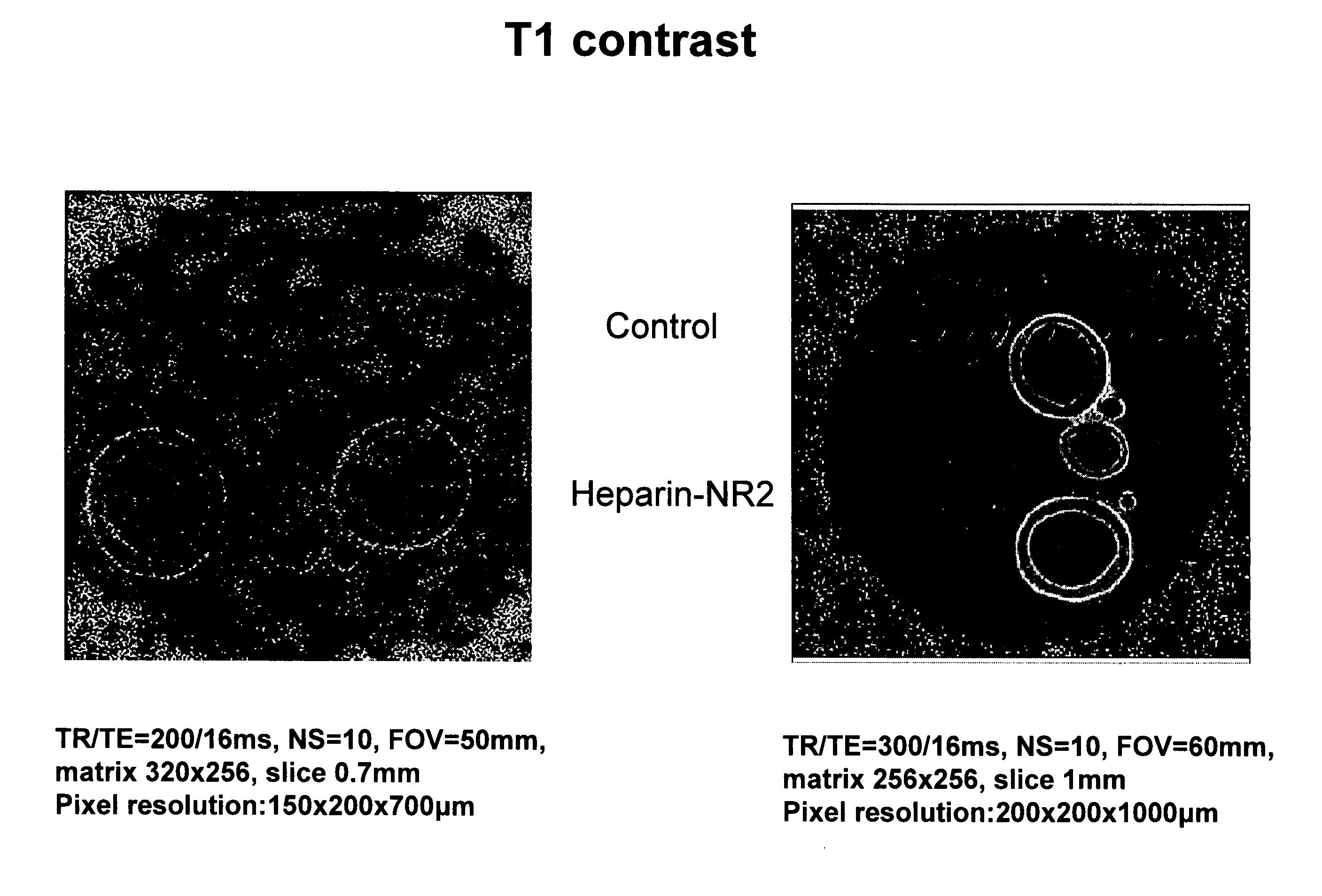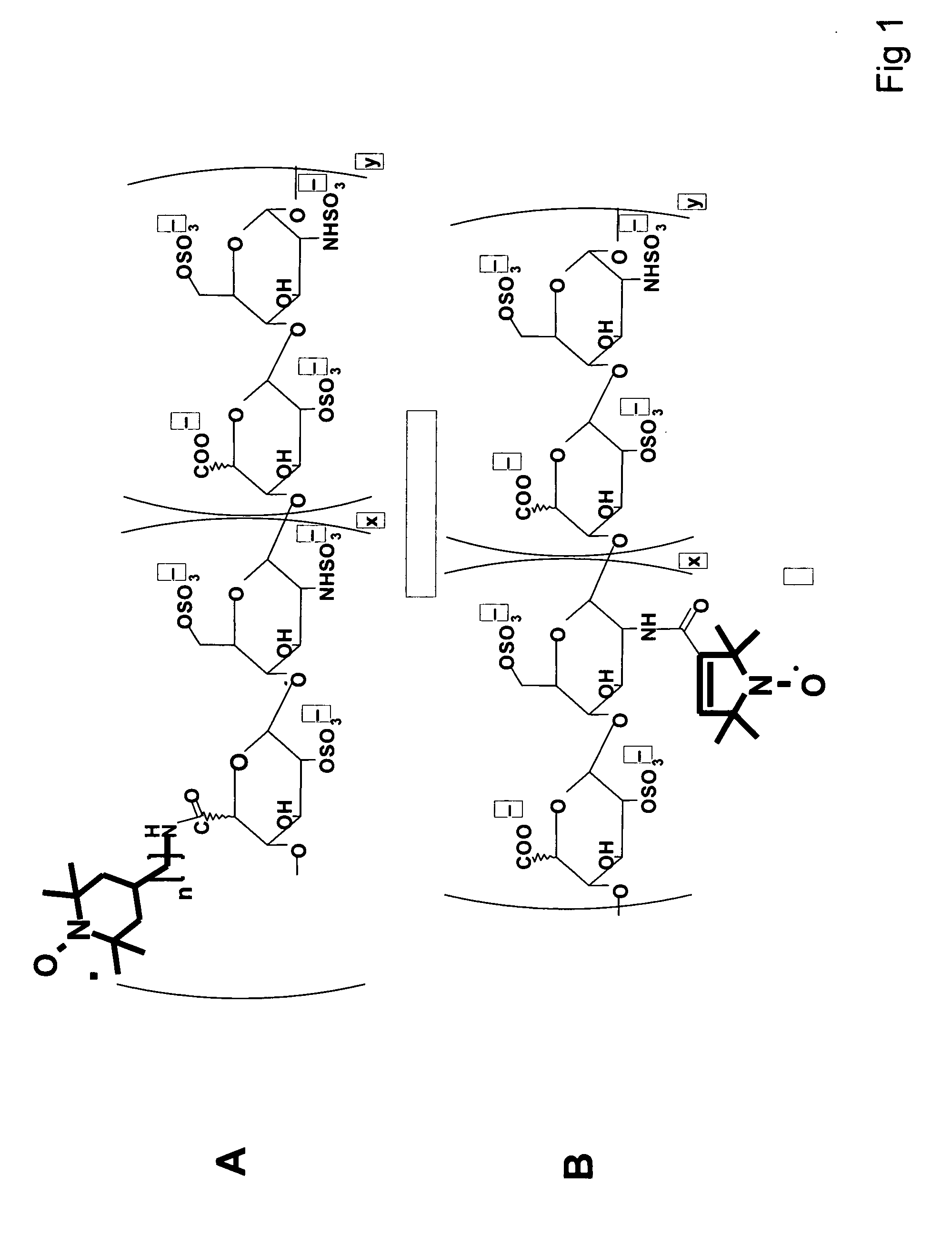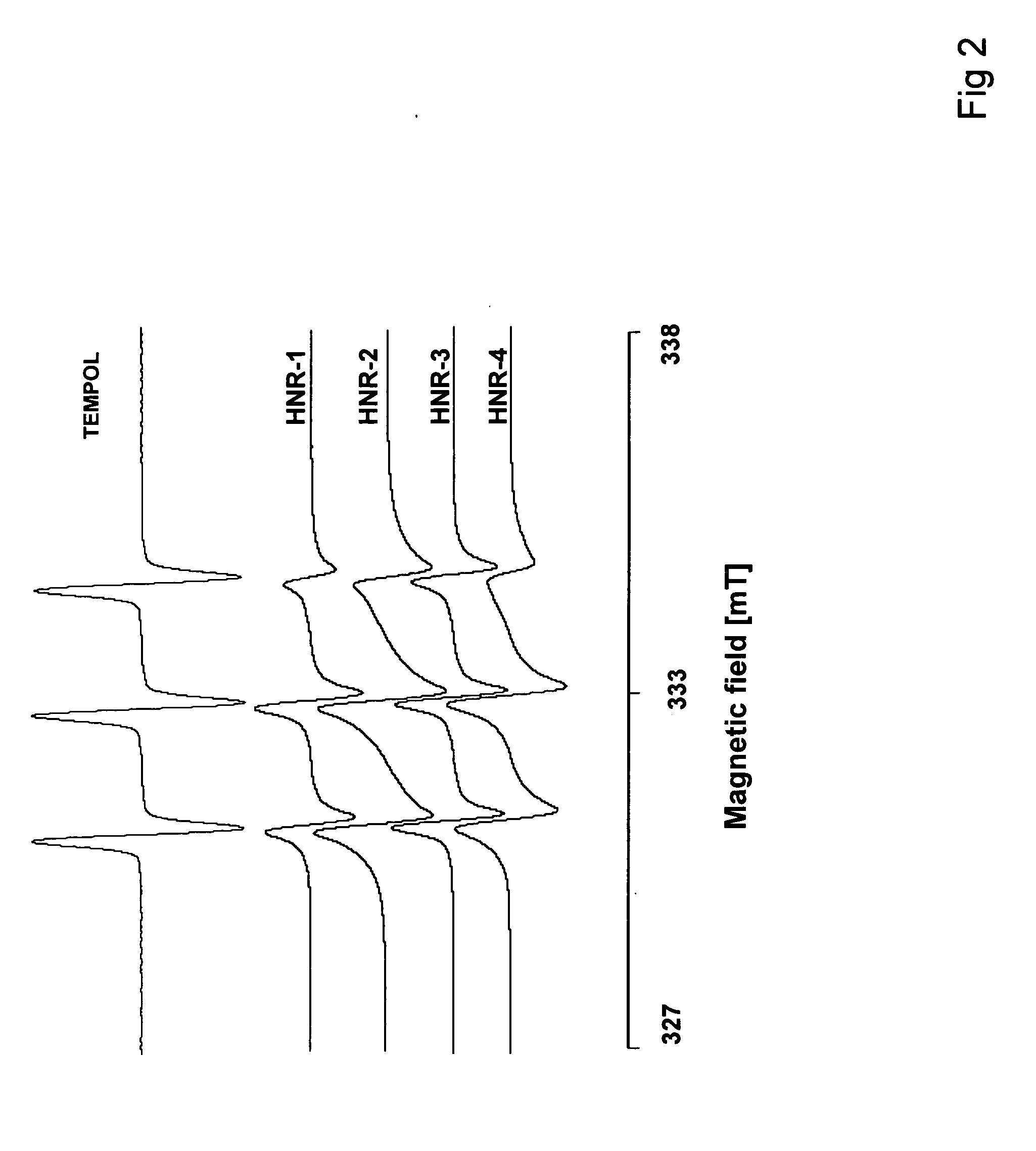Antioxidant and paramagnetic heparin-nitroxide derivatives
a technology of paramagnetic heparin and derivatives, applied in the field of antioxidant and paramagnetic heparin-nitroxide derivatives, can solve the problems of affecting the formation and neutralization of ros within cells and/or extracellular space, disruption of cellular compartments and/or functions, and the known fast elimination from the bloodstream, so as to achieve the effect of preventing binding
- Summary
- Abstract
- Description
- Claims
- Application Information
AI Technical Summary
Benefits of technology
Problems solved by technology
Method used
Image
Examples
example 1
[0138]Synthesis of 4-[(5-aminopentyl)carbonylamino]-2,2,6,6-tetramethylpiperidine-1-oxyl. Mixture of 1.31 g (10 mM) of 6-aminocaproic acid and 4.5 ml of trifluoroacetic anhydride was heated for 2 h at 80° C. in soldered ampoule. Volatile components of the reaction mixture were evaporated at reduced pressure. The residual liquid consisted mainly of bis-trifluoroacetylated 6-aminocaproic acid. To achieve hydrolysis of mixed anhydride function of this intermediate, 0.25 ml (14 mM) of water was added to it with ice cooling. The solution was left for 1 h at ˜20° C. and after that it was azeotroped with three 10 ml portions of dry benzene. The yield of 6-(trifluoroacetylamino)caproic acid was 2.27 g, mp 83° C. It was dissolved in 10 ml of ethyl acetate and triethylamine (1.39 ml, 10 mM) and ethyl chloroformate (0.96 ml, 10 mM) were added sequentially at ice bath cooling and stirring. After stirring for 20 min at the same cooling, solution of 4-amino-2,2,6,6-tetramethylpiperidine-1-oxyl (1...
example 2
[0139]Coupling of amino nitroxide to the heparin carboxyl groups. 171 mg (1 mM) of 4-amino-2,2,6,6-tetramethylpiperidine-1-oxyl (H2N—R1) and 115 mg of N-hydroxy succinimide (NHS) were mixed with solution of 615 mg of heparin sodium salt in 10 ml of 0.1 M HCl. The solution obtained was cooled in an ice bath and N-(3-dimethylaminopropyl) N′-ethylcarbodiimide hydrochloride (EDC) (230 mg, 1.2 mM) was added with stirring. The resulting solution was stirred in the ice bath for 30 min and after that stirring was continued at ˜20° C. H2N—R1 consuming was monitored by HPLC. Optimal pH˜5 was maintained by adding of 0.1 M NaOH solution. After 7 h 120 mg (0.70 mM) of H2N—R1 was coupled to heparin. The reaction mixture was freeze dried until it weight was ˜4 g and absolute ethanol (30 ml) was added slowly with stirring. The precipitate was triturated to powder, filtered, washed with absolute ethanol (3 ml×3), dissolved in water (3 ml) and reprecipitated with absolute ethanol (30 ml). The precipi...
example 3
[0140]Using the method of Example 2,3-amino-2,2,5,5-tetramethylpyrrolidine-1-oxyl (H2N—R5) was coupled to heparin, time of reaction was 4.5 h. The nitroxide radical content in the product was found to be 1.31×10−3 M / g or 81% of heparin carboxyl groups derivatisation. IR of Hep-C(O)NH—R5 (Nujol mull), v / cm−1: 1000, 1030, 1235 (SO3-), 1553(O═CNH), 1657 (O═CNH+CO2-). EPR(H2O, 3 mg / ml): three lines with 100:130:50 heights ratio, g factor was 2.0053, aN=1.58 mT.
PUM
| Property | Measurement | Unit |
|---|---|---|
| molecular weight | aaaaa | aaaaa |
| molecular weight | aaaaa | aaaaa |
| average molecular weight | aaaaa | aaaaa |
Abstract
Description
Claims
Application Information
 Login to View More
Login to View More - R&D
- Intellectual Property
- Life Sciences
- Materials
- Tech Scout
- Unparalleled Data Quality
- Higher Quality Content
- 60% Fewer Hallucinations
Browse by: Latest US Patents, China's latest patents, Technical Efficacy Thesaurus, Application Domain, Technology Topic, Popular Technical Reports.
© 2025 PatSnap. All rights reserved.Legal|Privacy policy|Modern Slavery Act Transparency Statement|Sitemap|About US| Contact US: help@patsnap.com



